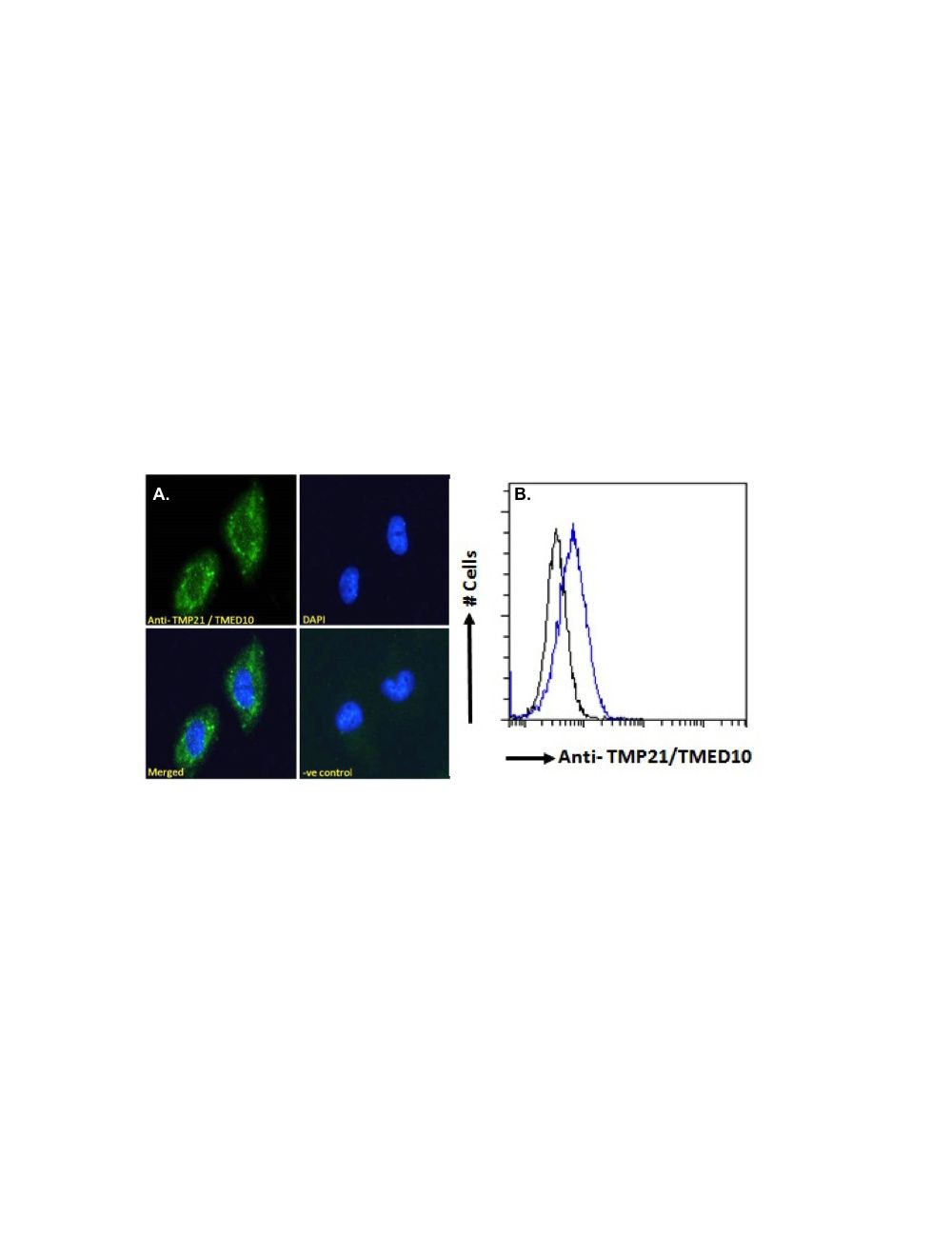Transmembrane emp24 domain-containing protein 10 (TMED10), Goat Polyclonal Antibody
As low as
US$397.00
Only %1 left
Catalog Number
G-1887
- Product Name Transmembrane emp24 domain-containing protein 10 (TMED10), Goat Polyclonal Antibody
- Product Description Goat anti-Transmembrane emp24 domain-containing protein 10 (TMED10) Polyclonal Antibody (Unconjugated), suitable for Pep-ELISA, ICC, FC.
- Alternative Names TMED10; transmembrane emp24-like trafficking protein 10 (yeast); P24(DELTA); S31I125; S31III125; TMP21; Tmp-21-I ; 21 kDa transmembrane trafficking protein; transmembrane emp24 domain-containing protein 10
- Application(s) FC, ICC, Pep-ELISA
- Antibody Host Goat
- Antibody Type Polyclonal
- Specificity Reacts with TMP21 / TMED10 from Human.
- Species Reactivity Bovine (Predicted), Dog (Predicted), Human, Mouse (Predicted), Rat (Predicted)
- Immunogen Description A synthetic peptide consisting of amino acids, C-YLRRFFKAKKLIE
- Conjugate Unconjugated
- Purity Description Purified from goat serum by ammonium sulphate precipitation followed by antigen affinity chromatography using the immunizing peptide.
- Regulatory Status For research use only.
Product Info
- Product Description Goat anti-Transmembrane emp24 domain-containing protein 10 (TMED10) Polyclonal Antibody (Unconjugated), suitable for Pep-ELISA, ICC, FC.
- Application(s) FC, ICC, Pep-ELISA
- Application Details Peptide ELISA (1:1000), Immunofluorescence (10 µg/mL), Flow Cytometry (10 µg/mL). Biosensis recommends optimal dilutions/concentrations should be determined by the end user.
- Target Transmembrane emp24 domain-containing protein 10 (TMED10)
- Specificity Reacts with TMP21 / TMED10 from Human.
- Target Host Species Human
- Species Reactivity Bovine (Predicted), Dog (Predicted), Human, Mouse (Predicted), Rat (Predicted)
- Antibody Host Goat
- Antibody Type Polyclonal
- Antibody Isotype IgG
- Conjugate Unconjugated
- Immunogen Description A synthetic peptide consisting of amino acids, C-YLRRFFKAKKLIE
- Sequence YLRRFFKAKKLIE
- Purity Description Purified from goat serum by ammonium sulphate precipitation followed by antigen affinity chromatography using the immunizing peptide.
- Format Liquid antibody. Supplied at 0.5 mg/mL in Tris saline, 0.02% sodium azide, pH 7.3 with 0.5% bovine serum albumin.
- Storage Instructions Upon receipt, aliquot and store at -20°C long-term. Store at 2-8°C short-term (up to 2 weeks). Minimize freezing and thawing.
- Batch Number Please see item label.
- Expiration Date 12 months after date of receipt (unopened vial).
- Alternative Names TMED10; transmembrane emp24-like trafficking protein 10 (yeast); P24(DELTA); S31I125; S31III125; TMP21; Tmp-21-I ; 21 kDa transmembrane trafficking protein; transmembrane emp24 domain-containing protein 10
- Uniprot Number P49755
- Uniprot Number/Name P49755 (TMEDA_HUMAN)
- Scientific Background Involved in vesicular protein trafficking. Mainly functions in the early secretory pathway. Thought to act as cargo receptor at the lumenal side for incorporation of secretory cargo molecules into transport vesicles and to be involved in vesicle coat formation at the cytoplasmic side Uniprot).
- Shipping Temperature 2-8°C (on cold packs)
- UNSPSC CODE 41116161
- Regulatory Status For research use only.

 1800 605-5127
1800 605-5127 +61 (0)8 8352 7711
+61 (0)8 8352 7711

